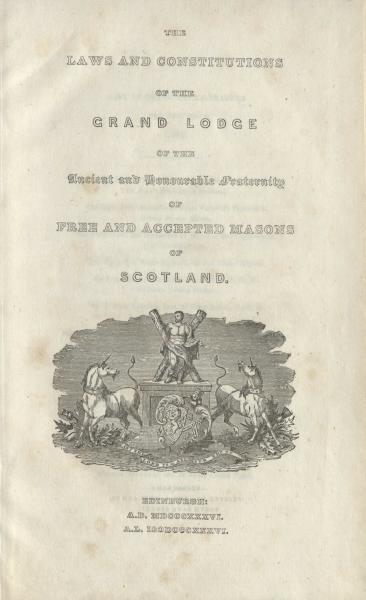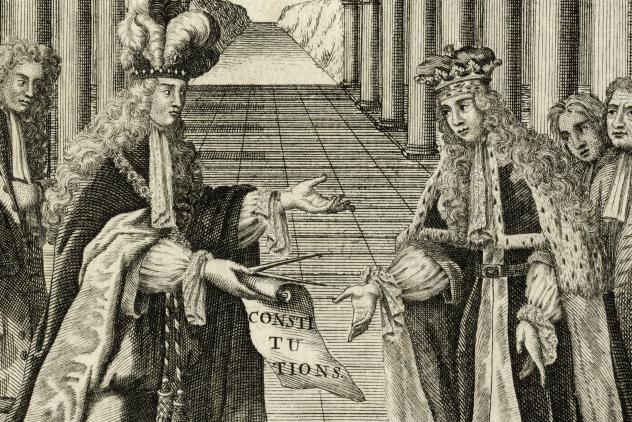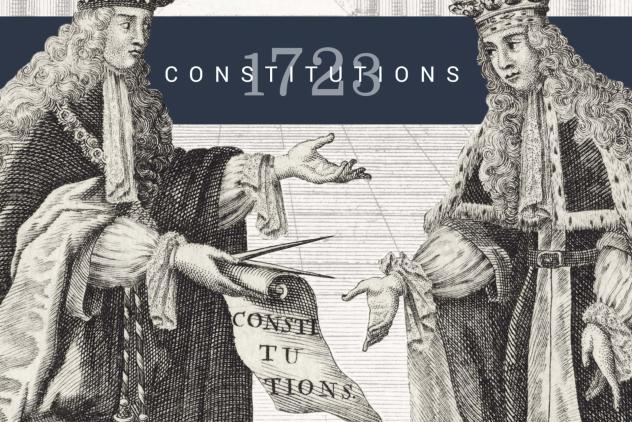Anderson’s Constitutions
From London to the WorldThe Constitutions of the Free-Masons, 1723
Commonly known as Anderson’s Constitutions, after its main author, the Rev. James Anderson, this book helped establish the London based Grand Lodge of England as the governing body of English freemasonry. The book was more than just a set of rules. It also contained a legendary history, some songs and a reworking of the ancient charges of the stone masons, which formed the moral framework of modern freemasonry, introducing it to the rest of the world.
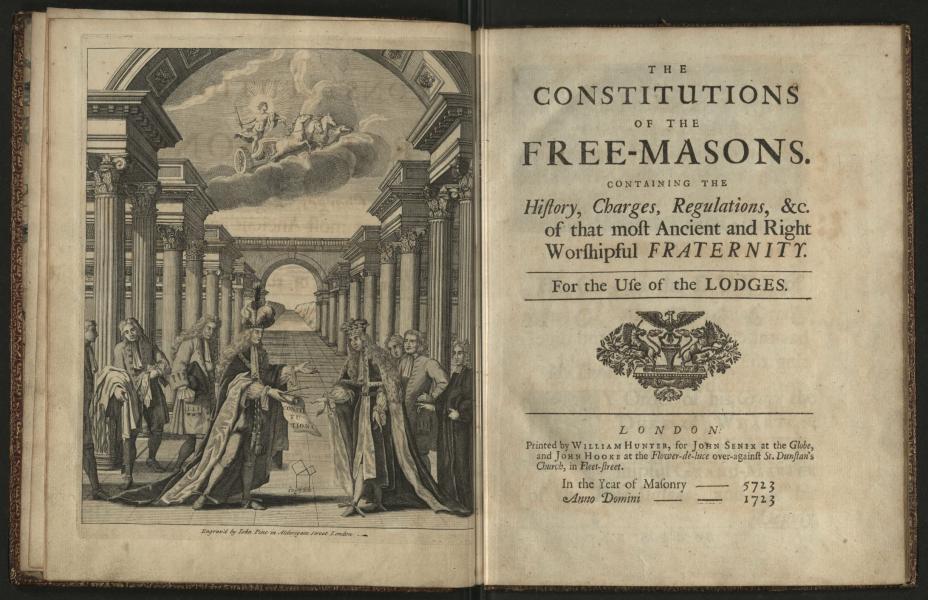
The First Irish edition, 1730
The Grand Lodge of Ireland was formed in 1725 and five years later, Dublin freemason John Pennel published an Irish edition of The Constitutions. He explained that lodges all over the British Isles were using Anderson’s Constitutions and his edition paid tribute with a near identical frontispiece to the English original

The first foreign language edition
This undated Dutch edition of Anderson was probably published in 1730 by Johan Kuenen, a founder of the Grand Lodge of the Netherlands. The Hague (Gravenhage) was a European centre for liberal publishing and from there Kuenen also published the first French (1736) and German (1741) editions.
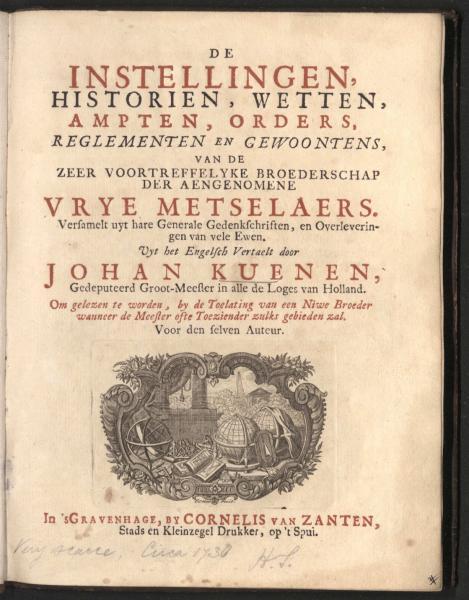
First American edition, 1734
Benjamin Franklin was a Philadelphia based printer when he published America’s first masonic book in 1734. It was a word for word copy of Anderson with the exception of an additional song, possibly penned by Franklin himself. Years later he would be a signatory of both the Declaration of Independence and the United States Constitution.
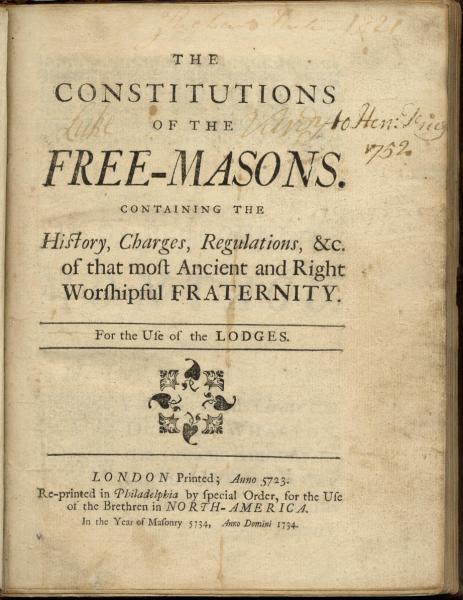
A Pocket Companion for Free-Masons, 1735
In 1735 Anderson complained to Grand Lodge that a William Smith, had pyrated a considerable part of the Constitutions of Masonry aforesaid to the prejudice of the said Br Anderson it being his sole property, and suggested working on a new edition of The Constitutions. This edition was published in 1736.
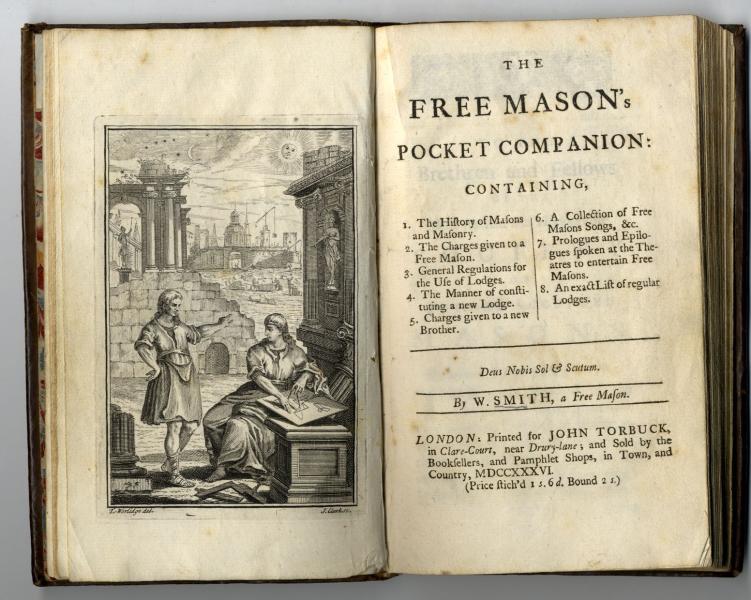
German edition of Smith, 1738
Smith’s Pocket Companion was extremely popular in Britain and Europe, indirectly helping to spread Anderson’s words to a larger audience, albeit unofficially. The title page of this German edition was illustrated with an engraving of the Sackville Medal, which relates to an early English lodge in Florence.
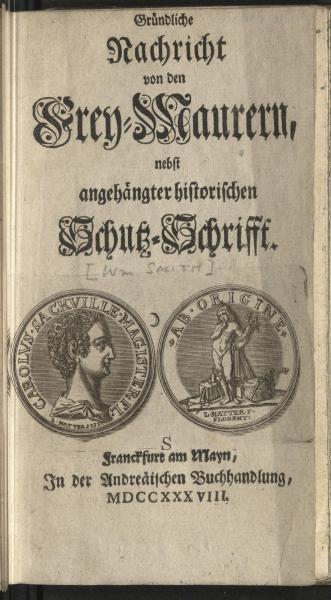
Histoire Obligations et Statuts, 1742
A second edition of Anderson’s Constitutions was published in 1738, with a much longer history. Huguenot exile Louis François de la Tierce had promised Anderson a French translation, which he published from Frankfurt in 1742. Unsatisfied with Anderson’s history, he completely rewrote it for a European audience.
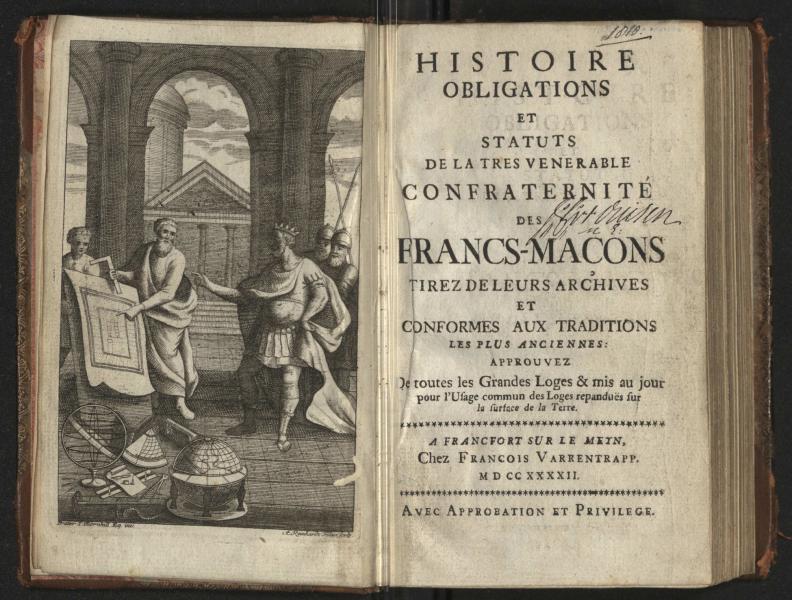
An English Rival, 1756
From the late 1720s, prejudice and, to a lesser extent, changes to rituals denied Irish freemasons access to London Lodges. In 1751 they created their own London based Grand Lodge and claimed the changes modern innovations. They called themselves the Antients Grand Lodge and named their constitutions Ahiman Rezon, or a help to a Brother.
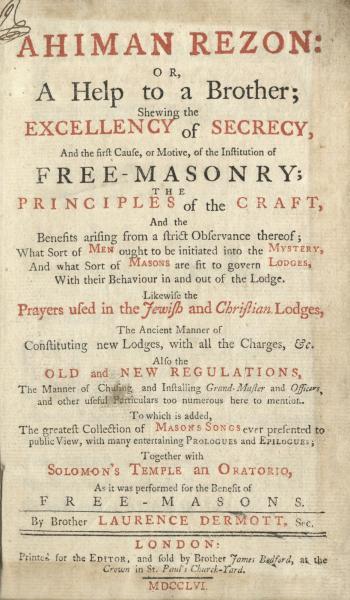
Ahiman Rezon, 1764
Laurence Dermott, Grand Secretary of the Antients Grand Lodge, plagiarised a lot of Ahiman Rezon from an Irish edition of Anderson’s Constitutions, however, like Smith’s Pocket Companion, it would help to take the underlying masonic framework contained in Anderson to a wider audience, especially in post-Independence America.
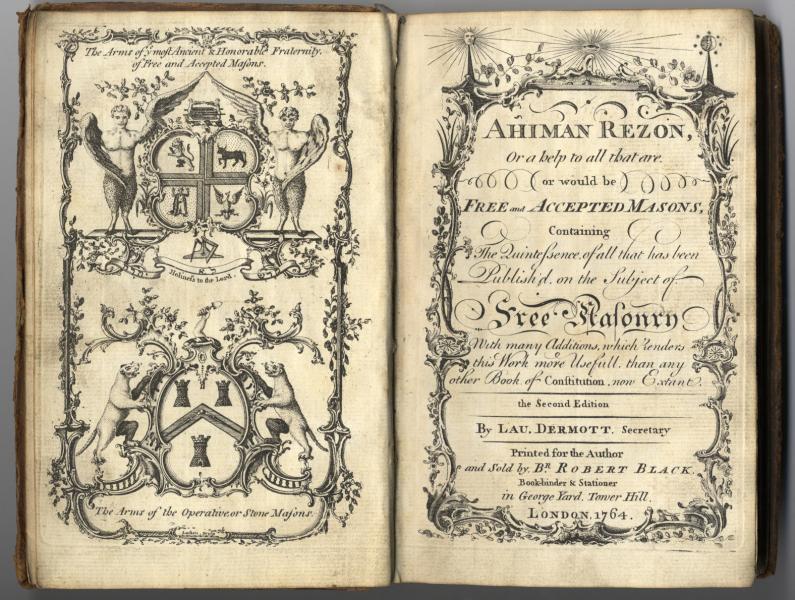
Neues Constitutionen, 1762
Foreign editions of Anderson’s Constitutions and Ahiman Rezon appeared throughout the eighteenth century. This third, German edition of Anderson ironically copied the frontispiece of Smith’s Pocket Companion.
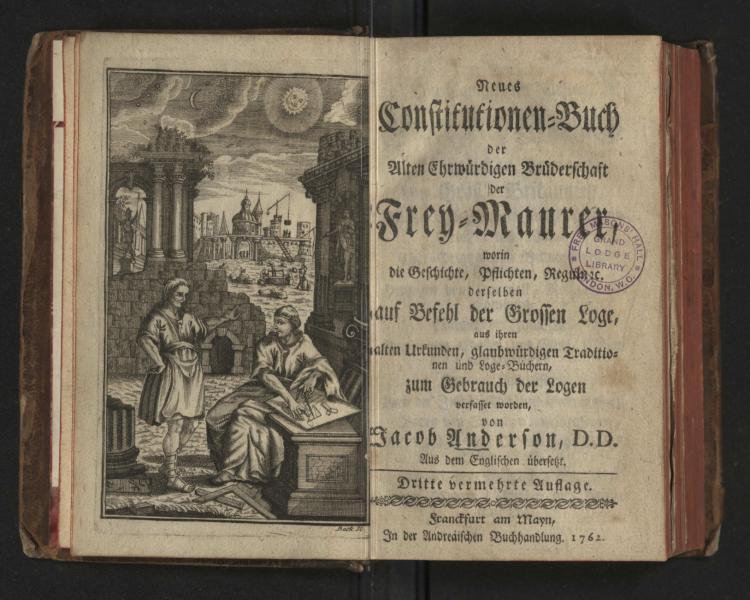
The Grand Lodge of Massachusetts, 1798
Most North American Grand Lodges favoured Ahiman Rezon because the title Constitutions was associated with freemasons who had remained loyal to Britain during the War of Independence. However, Massachusetts stuck with Constitutions, despite one of the publishers being renowned revolutionary Bostonian, Paul Revere, who had been Grand Master of Massachusetts in 1797.
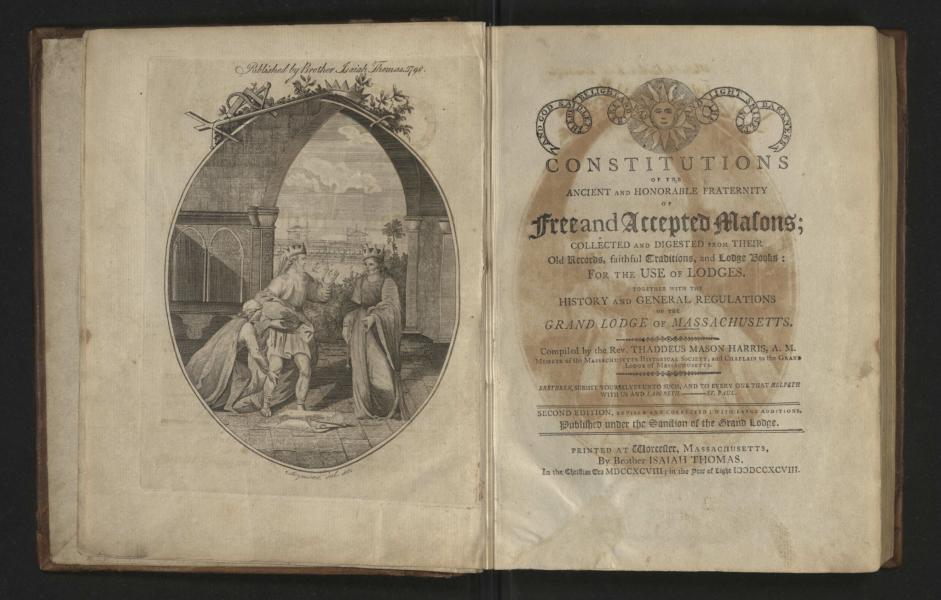
The Grand Lodge of Scotland, 1836
Scotland has had a Grand Lodge since 1736 and a number of its lodges predated the formation of the Grand Lodge of England in 1717. For one hundred years it did not see the need to produce a Constitutions, perhaps relying on lodges using English versions. Their first official version was published in 1836 but a set of rules and regulations were published as an appendix to Alexander Lawrie’s history of freemasonry in 1804.
